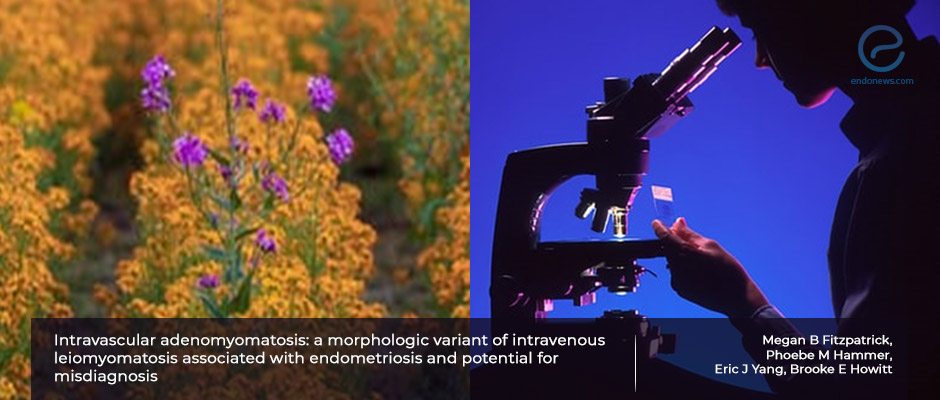Intravascular adenomyomatosis: an important entity to be alert
Jan 4, 2022
Gynecologic pathologists have described novel findings of a rare entity seen in endometriosis patients
Key Points
Highlights:
- Only 11 cases of "intravascular adenomyomatosis" have been described up to date, since its first report in 2013.
- Surgical pathologists dealing with gynecological specimens should be alert for appropriately interpreting this entity, especially in pelvic endometriosis patients.
Importance:
- Due to its rarity, intravascular adenomyomatosis may be confused with more potentially aggressive entities such as intravascular leiomyomatosis and endometrial stromal sarcoma.
- Pathologists should be aware of this lesion especially in endometriosis patients where a coincidence has been described recently with this manuscript.
What's done here:
- The authors have presented 4r new cases of intravascular adenomyomatosis all appearing in patients with pelvic endometriosis.
Key results:
- Correct pathologic diagnosis of intravascular adenomyomatosis as being distinct from intravascular leiomyomatosis is important to prevent misdiagnosis as endometrial stromal sarcoma.
- Intravascular adenomyomatosis is frequently associated with pelvic endometriosis, an association that has been described in this recent publication.
Lay Summary
Pathologists from Stanford University, USA have recently published four novel cases of intravascular adenomyomatosis co-existing with pelvic endometriosis in a recent issue of “Human Pathology”.
Intravascular leiomyomatosis is characterized by the presence of smooth muscle in venous and lymphatic spaces of the uterine muscle layer, i.e. myometrium. This invasive intravascular tissue consists of typical smooth muscle. Following the first description of a variant coined as intravascular adenomyomatosis, which is the growth of intravascular smooth muscle also featuring endometrial glands and or stroma in 2013, the number of cases has arisen to eleven till now. The main differential diagnoses are "intravascular leiomyomatosis" and "endometrial stromal sarcoma", including some cases that could bear smooth muscle and glandular differentiation.
Four novel cases have been presented recently by the Stanford pathology team where all of the cases were associated with pelvic endometriosis, a unique finding not mentioned before. The patients in this series were 39 to 45 years old, the clinical presentation was either for a pelvic mass, dysmenorrhea, or post-menopausal bleeding. All the patients had pelvic endometriosis besides intravascular adenomyomatosis in pathologic examinations of the hysterectomies.
Histopathologic findings for three patients showed intravascular bland smooth muscle tumors with plexiform features, with foci of admixed endometrial glands and/or stroma. One case was composed of only of numerous foci of intravascular adenomyomatosis. In none of the cases, significant nuclear atypia increased mitotic activity, or tumor cell necrosis was seen. All four patients had prominent adenomyosis and extrauterine endometriosis.
Three patients had no evidence of disease at the time of last follow-up [range 1-10 years]. One patient revealed persistent disease after incomplete surgical removal and anti-hormonal therapy, which involved the inferior vena cava at the time of diagnosis and initial resection.
The take-home messages of the authors can be summarized as follows: Precise pathologic diagnosis of intravascular adenomyomatosis, distinct from the entity called intravascular leiomyomatosis is important to prevent misdiagnosis such as endometrial stromal sarcoma and else. Intravascular adenomyomatosis is frequently associated with pelvic endometriosis, an association that has been revealed only in this series of patients.
Research Source: https://pubmed.ncbi.nlm.nih.gov/34856302
adenomyosis endometriosis intravascular leiomyomatosis endometrial stromal sarcoma intravascular adenomyomatosis

